If you think you need to put your vegetable garden to bed for the winter, think again (although you definitely have several gardening jobs to complete during the winter). Here I’ll discuss the best vegetables to grow in winter.
With a bit of adjusting and planning, you can grow vegetables all year long.
It’s early January, and I currently have celery, kale, onions, chard, lettuce, leeks, carrots, and radishes growing in my vegetable garden north of Toronto, Canada.
Winter gardening doesn’t look the same (or even work the same) as warmer-season gardening.
But having a store of fresh vegetables you can eat during the cold months, that part is the same. It’s also the primary reason I have taught myself to garden through the winter for the past few years.
I happen to live in a place where temperatures typically dip below zero for long enough that the ground freezes. And while freezing temperatures can significantly impede growing vegetables outside, it is relatively simple to create warmth.
In my experience, the primary barrier to growing vegetables in the winter is the shortened number of daylight hours.
You need to choose cold-hardy plants to grow vegetables within winter’s limitations. You also need to use the right equipment (cold frames/polytunnels and mulch) to capture as much heat as possible and insulate your plants from the cold. Timing your planting also plays a key role.
Lower temperatures and less daylight slow growth to near dormancy during the shortest days. So, you need to do a great deal of your growing before that time.
To do this, figure out how long a plant takes to mature to about 80% and work backward from your area’s frost date to determine how far in advance of the frost date you should be planting to enjoy a winter harvest.
Don’t worry if you’re feeling intimidated.
As long as you water your plants and keep them warm through the winter, they will begin to grow quicker again as the days start to lengthen. Just remember to brush the snow off the window portion of the covering system you are using so the light can continue to reach them.
In other words, if your timing isn’t exactly where you want it to be, the worst that will happen is your winter garden will become your early spring garden.
The rest is about what you choose to grow.
Most cold-hardy vegetable varieties fall into the categories of roots, greens, and brassicas (cabbage family). To learn more about cold-tolerant vegetables and exact cultivars, browse seed catalogs and see what you find.
Below are my recommendations for the best vegetables to grow in the winter, including when to plant them for autumn and winter harvests.
1 – Spinach
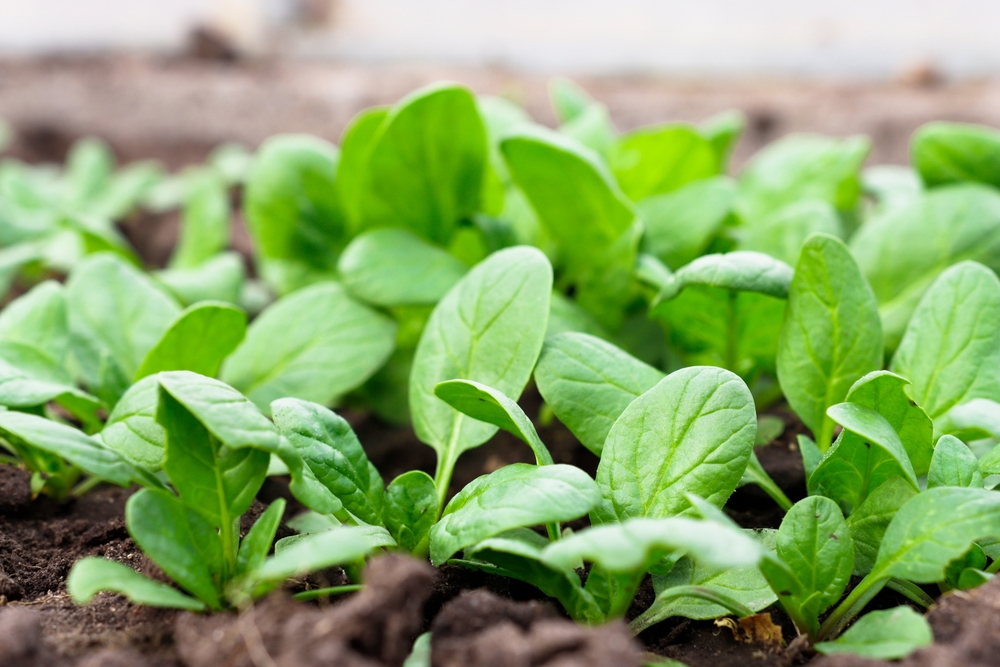
Quick facts: Plant 6-8 weeks before the first frost for autumn spinach. Plant 4-5 weeks before the first frost for winter spinach
You know spinach does best with the cool temperatures of autumn and beyond if you’ve ever tried growing it in hot conditions.
You can plant either type of spinach: smooth-leaf or savoyed-leaf (curly leaves).
Savoyed and semi-savoyed spinaches have somewhat bigger leaves and taste slightly more bitter than their smooth-leaf counterparts. For this reason, many often use savoyed spinach in cooking and smooth-leaf varieties in salads.
Spinach is one the best vegetables to grow in the winter.
2 – Carrots
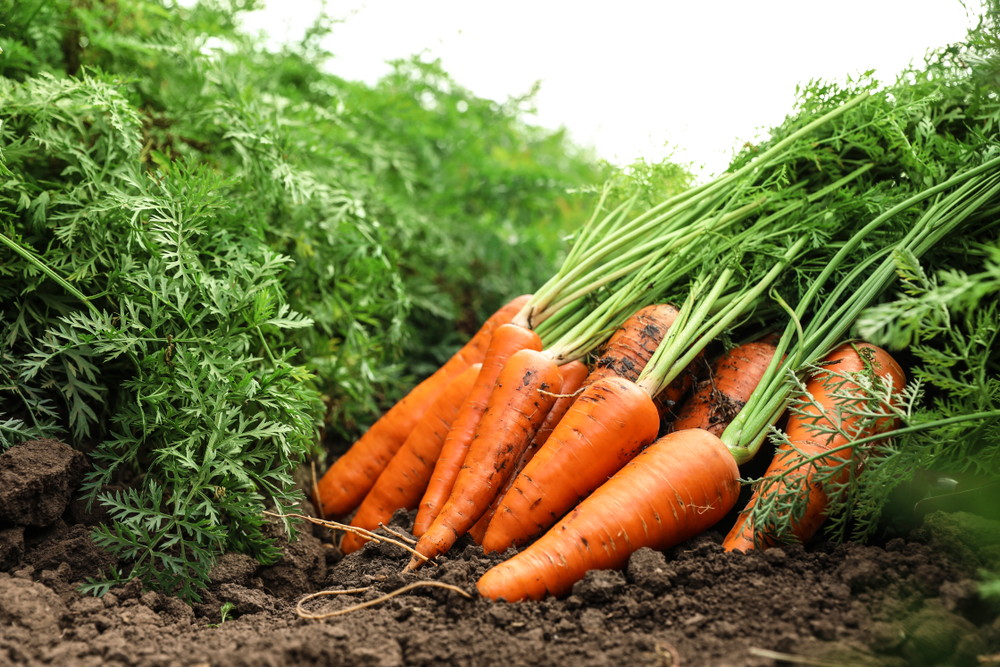
Quick facts: Plant 10-12 weeks before the first frost for autumn carrots. Plant 8-10 weeks before the first frost for winter carrots.
Carrots are a lovely vegetable to grow at any point in the season.
However, as temperatures drop, their flavor changes. Exposure to cold changes some of their starches into sugar, and they become sweeter.
Carrots are available in all kinds of sizes and even different colors. Grow what interests you.
As your carrots grow, harvest every second plant to make room for the remaining plants as they get bigger.
3 – Kale
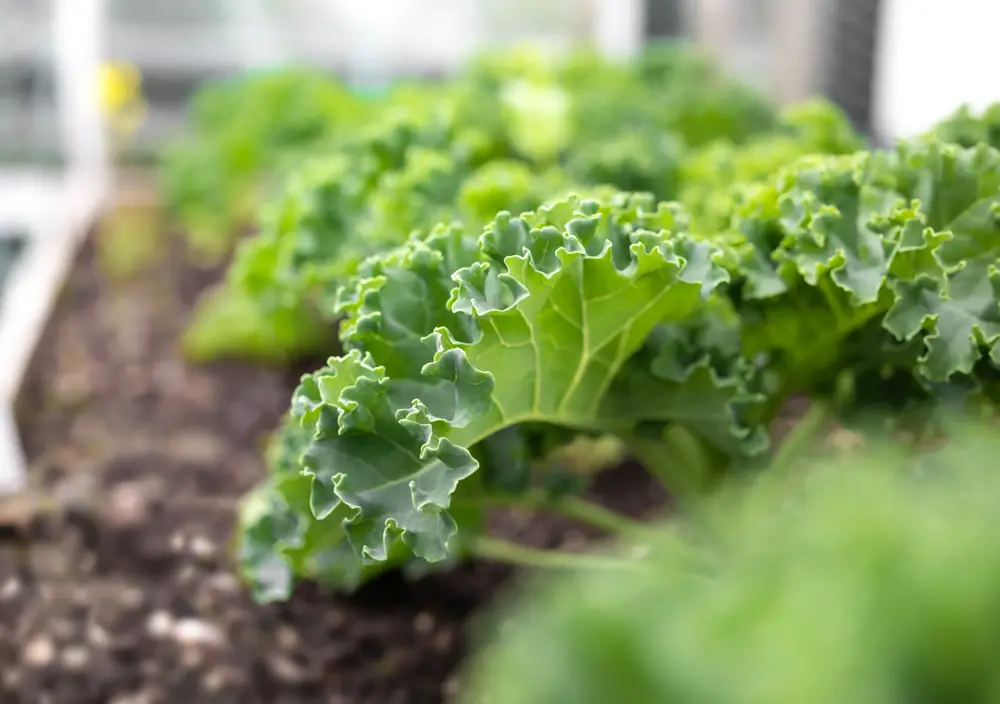
Quick facts: Plant 10-12 weeks before the first frost for autumn kale. Plant 8-10 weeks before the first frost for winter kale.
Being extremely cold hardy, kale is a natural fit as one of the best vegetables to grow in your winter garden.
Unlike the other plants included on this list, kale can grow to be 2-3 feet (0.6-0.91 meters) tall (depending on the variety), so plan for this or choose a variety that will stay compact.
Summer-produced kale can become bitter in the heat. Winter-produced kale is much sweeter.
Siberian, or Russian, kale is the most cold-hardy of the flat-leafed kales and well suited for you to eat raw (just remember to clean it and your other vegetables first!) as well as cooked, juiced, frozen, etc.
4 – Lettuce
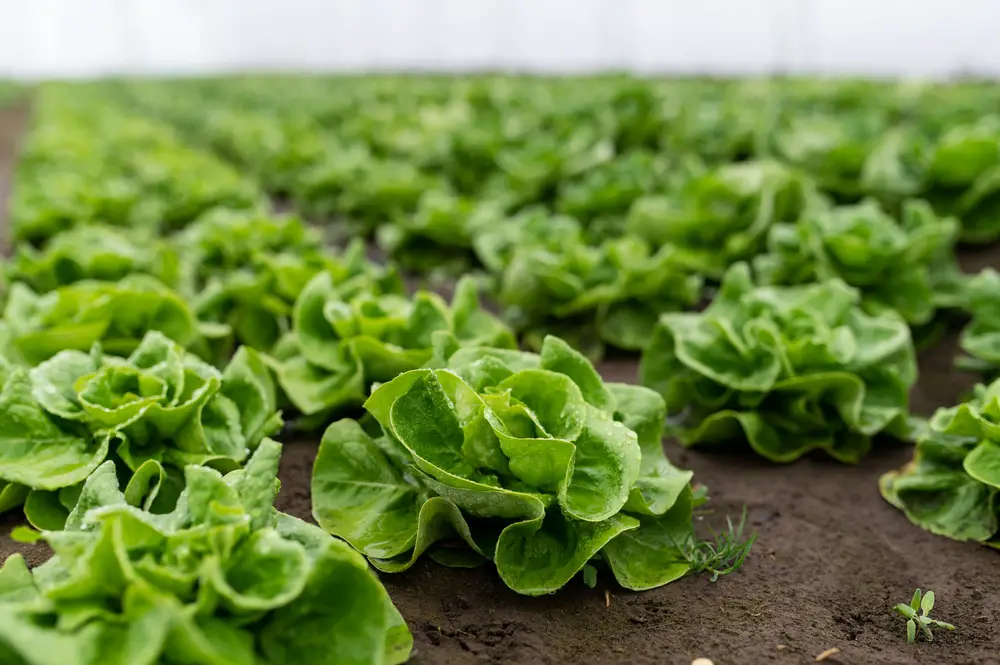
Quick facts: Plant 6-8 weeks before the first frost for autumn lettuce. Plant 4-6 weeks before the first frost for winter lettuce.
Whether you choose to plant leaf lettuce or head-forming varieties, take care to choose cold-tolerant varieties.
There comes a moment every winter when I really start to crave fresh vegetables.
I used to alleviate this by growing microgreens. Now, I go out to my winter garden and get what I need to make a salad. It might sound strange, but I am never so grateful for lettuce as I am at this time of year.
As you harvest your lettuce, plant more. It will take longer than expected to grow, but since lettuce is one of the fastest-growing vegetables (leaf lettuces, in particular), it is worthwhile to plant multiple successions.
5 – Chives

Quick facts: Plant 6-8 weeks before the first frost for autumn chives. Plant 4-6 weeks before the first frost for winter chives.
Though you can certainly grow onions in your winter garden, I recommend chives instead. They are a great vegetables to grow in the winter. Chives are much faster, taste great, versatile, and their lovely purple flowers (which are also edible) will make an appearance in the spring or summer.
Unless you dig them up completely, chives will establish themselves as perennials. This means they will send up new growth each spring from the same root system.
If covered over the winter, you can enjoy chives all year round. If not, the tops will die back in winter and remerge in spring.
6 – Cabbage
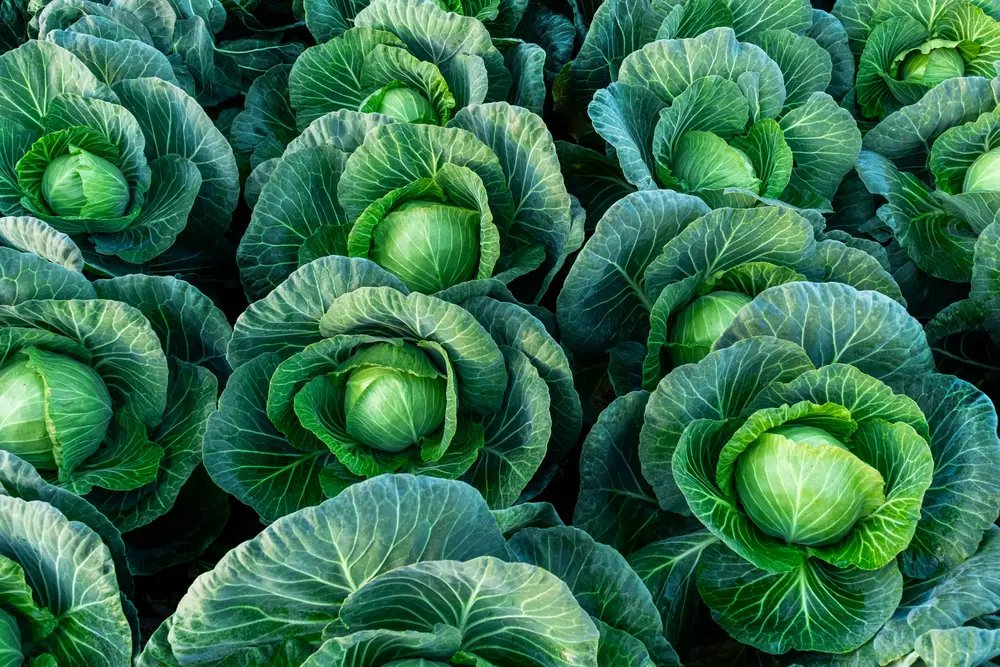
Quick facts: Plant 12-14 weeks before the first frost (direct sow or to be transplanted) for autumn cabbage. Plant 10-12 weeks before the first frost (transplant seedlings into the garden) for winter harvest.
Cabbage has three kinds: smooth head, savoy head, and Chinese. Each of those categories has a wide variety of choices.
You’re looking for long-growing varieties that indicate cold tolerance.
Once you harvest the main head, cut an X into the stem with a knife. This will cause the plant to produce what are called side heads.
Side heads are mini versions of the cabbage you’re growing. They’ll give you a second, smaller harvest from your already established roots.
Though you will not be able to harvest the same size of head you originally did, there is benefit to encouraging side-head growth because you can harvest this second growth of cabbage quicker than if you began again with seed.
This is due to the fact that the root system you are growing from is already established.
7 – Broccoli

Quick facts: Plant 12-14 weeks before the first frost for autumn harvest (direct sow or start seeds indoors to be transplanted to the garden later).
Transplant your seedlings to the garden 8-10 weeks before the first frost for winter harvest.
For successful broccoli harvests in the winter, choose a cold-tolerant variety and cover it before the first frost.
Similar to cabbage, many varieties will grow side shoots once the main head is harvested.
8 – Beets
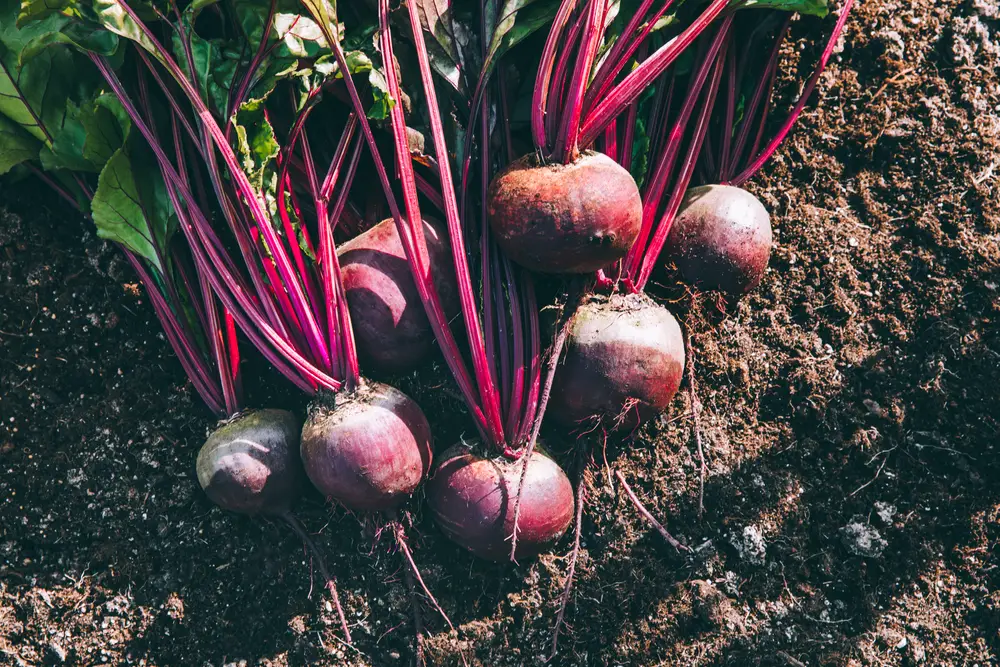
Quick facts: Plant 7-9 weeks before the first frost for autumn harvest. Plant 6-8 weeks before the first frost for winter harvest.
Beets are another easy and cold-hardy plant to include in your winter garden.
Like carrots, this root vegetable has many shapes, sizes, and colors to choose from, and both the roots and tops are edible.
As your beets grow, harvest every second plant to allow space for the remaining vegetables to grow to mature size.
9 – Arugula

Quick facts: Plant 4 – 5 weeks before the first frost for autumn arugula. Plant 3 – 4 weeks before the first frost for winter arugula.
Arugula is incredibly quick and easy to grow. In the right conditions, you will see it start growing a day or two after planting.
Able to grow plentifully in a variety of conditions, it is at home in any winter garden and makes a great addition to any salad.
Harvest outer leaves and let your plants keep producing.
10 – Radishes
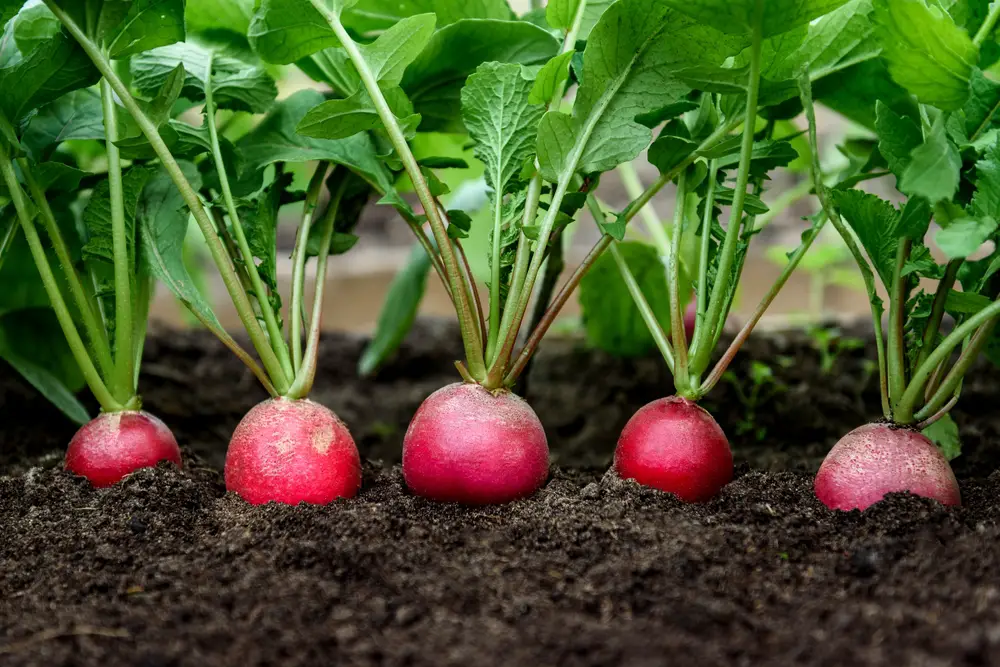
Quick facts: Plant 8-10 weeks before the first frost for autumn harvest. Plant 6-8 weeks before the first frost for winter harvest.
Radishes suitable for the winter garden are different from those best in other seasons. Winter radishes are longer than spring radishes and take longer to grow.
Harvest every second radish as it grows, creating space to accommodate mature-sized radishes.

